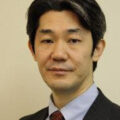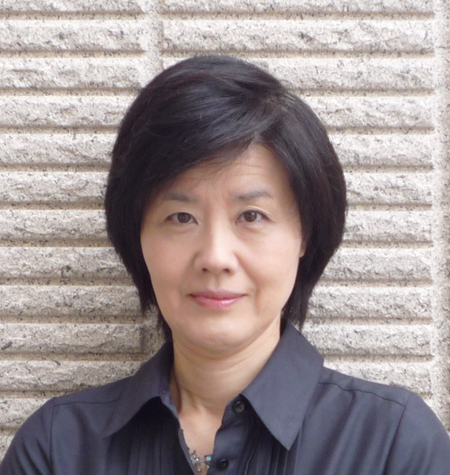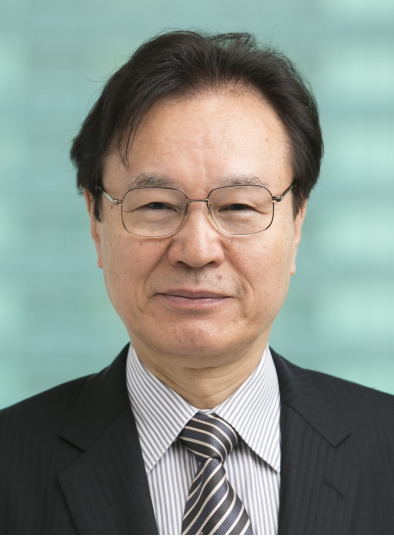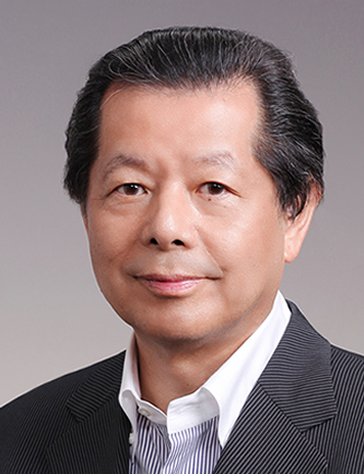North Korea’s Ballistic Missile Launch Test:Kim Jong-un Deploys Nuclear Missile ― Development is proceeding in an extremely rationalized way, and the target is the US mainland
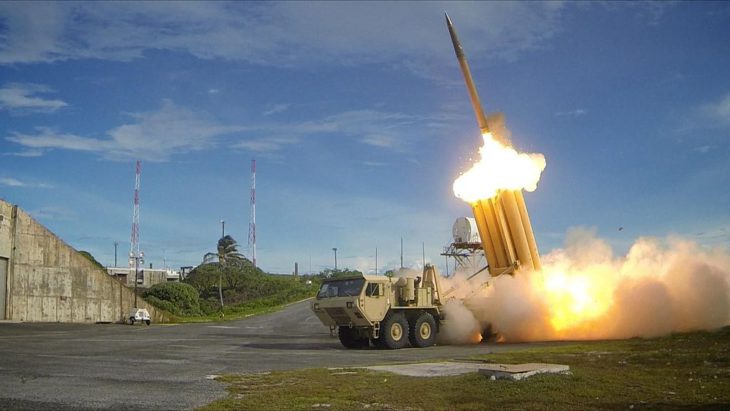
North Korea’s Ballistic Missile Launch Test: Kim Jong-un Deploys Nuclear Missile ― Development is proceeding in an extremely rationalized way, and the target is the US mainland
Photo: The first of two Terminal High Altitude Area Defense (THAAD)’s intercept test by US Army, via Flickr/ US NK News org
Nine” is an auspicious number favored by North Korean leaders. It is also the highest number in Oicho-Kabu, a game played with hanafuda floral playing cards that is also popular on the Korean peninsula. Kim Jong-Il’s birthday fell on February 16, and the constituent numbers, 2 + 1 + 6, also add up to nine. February 7, when a long-range ballistic missile was launched, April 23rd when a submarine-based ballistic missile was launched and May 31 when the Musudan intermediate-range ballistic missile was launched were all dates that add up to nine. Then, at 9:00 a.m. on September 9 (9:30 a.m. Japan time), North Korea conducted its fifth nuclear test at the Punggye-ri Nuclear Test Site in Kilju County, North Hamgyong Province. Generating a magnitude 5.0 seismic shock, the size of the explosion was the equivalent of 12-13 kilotons of TNT. This was the largest such explosion to date by the North Koreans, and has been rated as having released energy approaching that of the atomic bomb dropped on Hiroshima, estimated to have a yield of 15 kilotons. This also marks the first time North Korea has conducted two nuclear tests in the space of a year.
Japan and South Korea showed contrasting moves in response to the test. Both Japan and South Korea have received imagery of North Korea taken by US Keyhole-class reconnaissance satellites through military channels. According to those images, from around the end of August, the entrance to the main shaft on the north side, which was the site of the second, third and fourth tests, and the entrance to the unused main shaft on the south side were each covered with camouflage, suggesting an imminent test. North Korean radio transmissions exchanged around the site intercepted by Japan’s renowned “long ears” (listening station) reinforced this assessment.
In light of the fact that September 9 was also the 68th anniversary of the founding of North Korea, the Japanese government had designated a time around the ninth as “X-day.” Top secret manuals on responses in the event of a nuclear test were distributed to related government agencies.T-4 trainer aircraft deployed to the Air Self-Defense Force Tsuiki Airbase were fitted with dust collection pods designed to collect nuclear material and were put on alert to launch any time.
Around the time Japan finished fortifying its preparedness, a slender, small statured man with thick eyebrows arrived in Beijing under strict secrecy. This was Kim Song-Nam, vice director of the International Department in the Workers’ Party of Korea Central Committee. He was sent as an emissary with the aim of establishing a special party-to-party relationship with his department’s counterpart, the International Liaison Department of the Communist Party of China.
China had grown frustrated with North Korea’s nuclear weapon and ballistic missile development. The United States and South Korea used this as a pretext for deploying a sophisticated missile intercept system (THAAD) to the Korean Peninsula, and within South Korea, the nuclear armament debate had begun to intensify. Both developments were sources of great concern that threatened to worsen the security environment for China.
At the end of May, Chinese Head of State Xi Jinping extracted a promise out of Workers’ Party Vice Chairman Ri Su-Yong, who was visiting China under the pretext of reporting on the North Korean Workers’ Party Congress. The pledge was to “communicate about any major decisions.” This promise was reaffirmed at foreign ministerial talks between China and North Korea that took place at Vientiane, Laos and the end of July. Kim Song-Nam was in China to make good on this promise. “Did North Korea give advance notice of its nuclear test?” Facing a barrage of questions from Japan, the US and South Korea, the Chinese side continued to express its strong annoyance to North Korea while replying, “We possess no materials in particular with which to respond.”
However, the real answer was found in Rodong Daily News on September 9, the day of the nuclear test and also the anniversary of the founding of North Korea. While the front page featured an article introducing a telegram from Russian president Putin congratulating the country on its anniversary, there was no such congratulatory message from General Secretary Xi Jinping. “They saved face for China at the bare minimum,” noted sources related to North Korea.
March 9 marked the beginning
Meanwhile, it is hard to say that South Korea, to which North Korea poses the greatest threat, was in a high state of tension. The day before the test took place, South Korean administration officials were apparently lost for words during a phone call from the Japanese government seeking information on South Korea’s readiness: “We have been continually saying since the Spring that the next test could happen at any moment, so to be asked at this late stage…” As it turned out, when the test happened South Korean President Park Geun-hye was traveling abroad. Acting in her stead, Prime Minister Hwang Kyo-ahn was working in Sejong City and also not present in Seoul. As a result, it took two hours until the National Security Council was convened, drawing criticism. President Park Geun-hye, who was far away in Vientiane, Laos, heard reports of the nuclear test and made repeated pronouncements that the test “demonstrates North Korea’s wild recklessness” and that “these sorts of attempts will only end up hastening the North’s self-destruction.” Each of Park’s harsh words carried a sense of frustration at having been caught flat-footed by the North Koreans.
At 1:00 p.m. on the 9th while the National Security Council was still underway in South Korea, Ri Chun-hee appeared on Korean Central Television in a Chimageogori traditional Korean attire. A personal favorite of Kim Jong-Il, Ri holds the title of “People’s Broadcaster,” the highest position for an announcer in North Korea. In a powerful voice delivered in her distinctive intonation, Ri read a statement from North Korea’s nuclear weapons institute.
“The nuclear test finally confirmed the performance, power and other characteristics of a nuclear warhead that is able to be mounted on ballistic rocket missiles. This will enable the D.P.R.K. to produce at will and as many as it wants a variety of smaller, lighter and diversified nuclear warheads of higher strike power.”
The effective beginning of related countries’ military and diplomatic information warfare regarding the fifth nuclear test was March 9 this year. On this day, North Korean media simultaneously reported that Kim Jong-un had “ordered the scientists and engineers of the Nuclear Weapon Research Department to undertake a project to weaponize its nuclear arsenal.” Kim Jong-un received an explanation of the structure and principles involved while in front of a “miniaturized nuclear warhead.” Kim then approvingly noted that “having made the nuclear warhead lighter and achieving standardization and normalization suited to deployment in a ballistic rocket was the true nuclear deterrent.” A photograph showing Kim Jong-un smiling broadly in his heavy coat in front of a glinting silver-colored metallic sphere was even released.
This elicited similar exclamations from the intelligence officials who saw it, marveling at the idea of the country openly showing off a nuclear warhead that should have been subjected to the utmost secrecy. Certainly, the spherical object was embedded with the “implosion lens” required to apply pressure from different directions at the same time in order to produce a nuclear fission reaction. A South Korean expert who looked at the photo speculated that “at that size, a warhead could weight around 500 kilograms.” At 500kg is light enough for it to be mounted on one of the ballistic missiles that North Korea possesses. North Korea was hasty to prove that its own claims were correct. This was the common conclusion at which related officials arrived.
Six days later, the North Korean media proved their conclusions to be correct.
On March 15, outlets such as the Korean Central News Agency reported that Kim Jong-un had issued field orders to conduct a simulated test of atmospheric re-entry of a ballistic missile warhead. The agency claimed that “the test was conducted to assess the heat resistance of the warhead tip and evaluate the heat-resistant coating, and the test results satisfied all technical indicators.” The agency also reported the instructions Kim Jong-un had issued:
“To enhance the reliability of nuclear attack capabilities, a nuclear warhead explosion test and a test-fire of several kinds of ballistic rockets able to carry nuclear warheads will be conducted in a short time.”
From this day, North Korea carried out a series of launches, including short-range Scud B (300km range) and Scud C (500km range) missiles, Scud ER intermediate-range missiles (1000km range), Rodong missiles (1,300km range), and Musudan missiles (3,000km range).
In the lead-up to its fifth nuclear test, North Korea launched more than 20 missiles over a period of about six months. This far exceeded the 16 missiles Kim Jong-il launched over his 18 years in power from 1994 to his death in 2011. To wide-eyed defense officials from various nations, it appeared as if North Korea had completely forgotten about concerns such as sanctions.
Several of the test-firings came as a shock to the international community. The first was the successful test launch of a Musudan missile believed to have been a modified submarine-launched ballistic missile (SLBM) from the former Soviet Union. According to the South Korean Defense Ministry, the missiles were deployed in 2007 but no launches had been observed and countries offered differing assessments.
Following the first launch on April 15, North Korea conducted a total of four subsequent test launches, all of which resulted in failure.
Shortly after 8:00 a.m. on June 22, the North Korean military followed on from the failure of its first launch before 6:00 a.m. that day and launched a second Musudan missile from a location near Wonsan, in Kangwon Province. The second launch reached an altitude of 1,000km and splashed into the Japan Sea approximately 400km from its launch point.
The South Korean military determined that North Korea had chosen a lofted trajectory that launched the missile to a high altitude to control its flying distance, and concluded that the missile actually had a potential range of around 4,000 kilometers. The Musudan missile can be fitted with a warhead weighing around 650kg, giving North Korea the ability to launch a direct strike on US territory in Guam.
Several days after this success, the South Korean government communicated to the US its desire to bring forward the announcement concerning the THAAD deployment in South Korea.
The US side had originally wanted to make the announcement around July, but the South Korean side had asked to wait until diplomatic and security talks between the US and South Korea slated for October in order to shore up domestic support.
The United States accepted South Korea’s sudden change of heart with surprised. It underscored how much the successful Musudan test firing had shocked the South Koreans.
On July 8, the South Korean Defense Ministry and US forces stationed in South Korea held a joint press conference to announce the deployment of the THAAD system in South Korea by the end of 2017.
Neutralization of the nuclear umbrella
The second shock came at around 5:30 a.m. on August 24. North Korea launched an SLBM from the Sea of Japan off the coast of Sinpo, South Hamgyong Province. The missile fell around 500km away within Japan’s air defense identification zone. This time North Korea once again adopted a lofted trajectory to intentionally shorten the flight distance and ensure that the missile would land in Japanese territorial waters or on Japanese land.
The South Korean military gravely determined that when converted to a normal trajectory the flight distance would have been around 1,000 km, and that if the missile had been loaded with enough fuel, it could travel 2,000km.
Previously, North Korea’s SLBM had exhibited a range of 300km. Although they had completed the technologies enabling a launch from underwater, their ability in terms of missile unit technologies was underrated as being further behind.
North Korea conducted land-based ejection tests of its SLBM around Autumn 2014. In April 2015, it began tests to eject the waterproof capsule housing the missile up to the point of ignition from underwater. At the time, the South Korean military thought the North was around five years away from deployment, but in April this year, it revised its assessment to “three years at the earliest.” With the success in August of this year, those assessments were steadily walked back with the possibility of deployment within the year. A former officer in the South Korean military angrily concluded that “we were underestimating the North,” while military experts lamented that “we are at the limit of our information gathering capabilities. We made judgments based only on fragmented information and misread the North’s overall collective strength and political willpower.”
The main purpose of an SLBM is retaliation for a nuclear strike. By having the option to retaliate by means of a hard-to-detect submarine even it is hit by a nuclear strike and the mainland is destroyed, a country can deter its enemies from attacking. The wider the area in which a submarine can move and operate under the sea inside the area in which its ballistic missiles can reach the target, the greater the threat it poses to its enemies. North Korea’s SLBMs are the same basic type as its Musudan missiles, and are believed capable of warhead payloads of around 650kg.
The ultimate purpose of North Korea’s SLBM development is to neutralize the nuclear umbrella the United States extends over matters on the Korean Peninsula. They want to make the United States think that “if we launch a nuclear attack against North Korea, we might suffer a retaliatory strike with SLBMs,” because if they can cause the US to be even a little hesitant in attacking, there is the possibility that the North Korean military could beat South Korean forces in conventional warfare.
The United States and South Korea believe that moving forward, North Korea will rush to develop a nuclear-powered submarine of the 3,000 ton class or greater to give it the ability to launch an SLBM-based strike on the United States mainland. North Korea has constructed 1,800 ton Romeo-class submarines in the past and is believed to be currently developing new submarines equipped one or two SLBM launch tubes.
The new type of submarine is modelled after a Soviet era Golf-class submarine which has a range of 9,500 km if run at low speed.
While the submarine runs on diesel fuel, if it a nuclear submarine it would be able to continually cruise underwater semi-permanently, and take voyages lasting several months. If its only enemies were on the Korean Peninsula and Japanese military bases it would never need to travel that far. By simply constructing multiple diesel-powered submarines and launching them in rapid succession, the North can place a psychological strain on its foes with the suggestion that “if we lose sight just once, it could all be over.”
The biggest shock before the nuclear test cam on September 5. A little past noon on this day, North Korea launched three Scud ER ballistic missiles (with 1,000km ranges) from an expressway near Hwangju in North Hwanghae Province. 30 seconds after the first launch, the second and third missiles were launched one second apart.
What amazed Japan, the United States and South Korea is that the first and second missiles splashed down at almost the same location in the sea some 240km to the west off the coast of Okushiri Island, Hokkaido Prefecture. The two missiles also followed near-identical trajectories, and various countries were temporarily confused, analyzing a total of two missile launches instead of three. The second launch, which was slightly off course, splashed within 10km of the impact point of the other two missiles. During the night when satellite-based tracking is difficult, the Scud ER missiles were transported on portable launchers from a ballistic missile base adjacent to the launch point. After they were concealed in the tunnel of an expressway, the missiles were pulled out moments before the launch. With the technological abilities and proficiency of the North Korean military, it is expected to take less than an hour from when a portable launcher is fixed in place until it is ready to launch. In fact, several hours before the missiles impacted, a 100,000 ton-class LNG tanker had been traveling through waters approximately 70km south of the impact point from the direction of North America towards the Korean Peninsula. Having failed to detect movements immediately before the launch, Japan, the US and South Korea were unable to warn vessels operating in nearby waters.
Limitations of Aegis Ships
While this was the first time a Scud ER launch had been detected, no one in Japan, the United States or South Korea had expected it to be so accurate. A Scud ER missile believed to have a warhead payload of approximately 800kg. It is quite possible that North Korea could mount a nuclear warhead on such a missile. But since North Korea has shown that it can successfully hit an area of the sea even if the missile did not explode with 100% certainty, it is also quite possible that such a missile could be loaded with a warhead designed to disperse radioactive material, a so-called “dirty bomb,” or other chemical weapons. According to the South Korean Defense Ministry, North Korea has already stockpiled between 2,500-5,000 tons of chemical weapons such as sarin and yperite (mustard gas).
Military officials also focused on the number – three launches. Aegis ships fielded by Japan and the United States are equipped with SM3 seaborne anti-ballistic missiles capable of intercepting missiles at an altitude of around 300km.
When SM3-Block II type currently under development is completed, the intercept altitude is expected to increase to 500km.
At the time on September 5, a single Aegis ship operated by the Maritime Self-Defense Force was in the Japan Sea in response to an order for destruction measures to prepare against a ballistic missile launch by North Korea.
But even an Aegis ship designed to intercept missiles incoming from multiple directions simultaneously has limitations. A single Aegis ship can identify more than a dozen enemy missiles, assign an order of priority for each of those missiles, and simultaneously intercept some of them while also borrowing the homing functions of the intercept missiles.
However, ballistic missiles that make unpredictable movements as they fall at high speeds along a spiraling path, need to be aimed with radar up to the moment they are shot down. Aegis ships are only equipped with two of these guidance systems known as “illuminators.” According to a military official, “if we are unlucky, we can only shoot down two ballistic missiles. It is not that difficult for North Korea to learn of this limitation based on publicly available information on the Internet or elsewhere.”
North Korea possesses approximately 300 intermediate-range missiles including Rodong, Scud ER and Musudan varieties, along with some 1,000 Scud B and Scud C short-range missiles. It is also believed to have deployed dozens of portable launchers, giving it sufficient capability to launch a “saturation attack” that would overwhelm the enemy’s defensive capabilities.
Following the triple missile launch, members of the Japanese Diet caused a panicked commotion, summoning officials from related agencies such as the Ministry of Defense and Ministry of Foreign Affairs and addressing them with raised voices. Questions that cast aside the norms of present-day Japan like “have we set up shelters?” and “can be adequately protect the Japanese people” were flying around, and the fact that such questions were even raised underscored the seriousness of the latest development.
The Kim Jong-un Regime is formidable
What is the significance of Kim Jong-un ordering “nuclear warhead detonation tests?” In effect, Kim is ordering his military to create and deploy a nuclear warhead that is compact and light enough to be mounted on a long-range ballistic middle capable of striking the continental United States.
The improved version of the Taepodong-2 long-range missile that North Korea launched on February 7 has already demonstrated a flight capability of 12,000 km, a range that includes the east coast of the United States. The KN08, which has not yet been test fired, is also believed to possess a similar range. They are believed to accommodate warhead payloads of 650kg to 1,000kg.
Immediately following the nuclear test on September 9, the South Korean Defense Ministry delivered an expedited report to the South Korea’s National Assembly, in which it expressed its view that the bomb used in North Korea’s fourth nuclear test conducted in January had been a “boosted fission bomb” and not a hydrogen bomb as the North had claimed.
It is highly likely that a boosted fission bomb was also used in the fifth test, whose yield was approximately twice that of the previous test. A boosted fission bomb uses a small nuclear fusion reaction to trigger a nuclear fission reaction more efficiently.
It is thought that such bombs can be shrunk to about a quarter the size of a conventional nuclear bomb that only involves a nuclear fission reaction, such as the bombs dropped on Hiroshima and Nagasaki.
As the nuclear bomb used on Nagasaki weighed approximately five tons, North Korea is believed to have already shrunk its nuclear warhead to a little over one ton. Setting aside the question of whether it could survive atmospheric re-entry, Japan, the United States and South Korea share the view that North Korea has at least succeeded in mounting a nuclear warhead on a missile.
What’s more, North Korea is currently believed to possess more than a dozen nuclear warheads and some believe that number may grow to around fifty by the year 2020.
As Chairman of the Workers’ Party of Korea, Kim Jong-un has steadily promoted the development of nuclear-tipped ballistic missiles. Just what is going on around him? In a press conference held at the end of August, the South Korea Ministry of Unification announced that Kim Yong-jin, vice premier for education in North Korea, had recently been executed. According to ministry officials, the poor attitude he had displayed while attending the Supreme People’s Assembly in June had been seen as problematic, and as a result of a probe, he was executed by firing square sometime in July for being an anti-party, anti-revolutionary agitator.
It was further announced that Kim Yong-chol, director of the party’s United Front Department, was ordered to undertake a form of propagandized education referred to as “revolutionary re-education,” and that Choe Hwi, a deputy chief of the party’s Propaganda and Agitation Department, was currently undergoing the same re-education.
Around two weeks earlier on August 17, the Ministry of Unification had announced that Thae Yong-ho, North Korea’s deputy ambassador to the United Kingdom, had recently defected to South Korea together with his wife and child.
The South Korean government enthusiastically claimed this to be “evidence of a weakening in the Kim Jong-un regime.” When announcing the defection of deputy ambassador Thae, the ministry’s press secretary even noted that “among the core class in the North, there is little hope placed in the Kim Jong-un regime and a growing recognition that the North’s system has reached its limit. Internal bonds among the ruling class may have weakened.”
Indeed, since Kim Jong-un assumed power, the purges and executions of high-ranking officials have been notable. Related sources have echoed this sentiment. “As Kim Jong-un is erratic and overbearing, there is a tension among his underlings. To protect themselves and their workplace from purges, the spectacle of officials anonymously informing on one another has increased.”
It is also true that Kim Jong-un has expressed no interest in diplomacy. In July, the North Korean Foreign Ministry issued a statement describing the United States’ actions to impose sanctions on Kim Jong-un as a “declaration of war.” The ministry announced that it would “sever all diplomatic contact.” According to US and South Korean diplomatic sources, after the July announcement, North Korea also ceased contact between North Korea’s diplomatic mission to the United Nations and the US State Department, a diplomatic contact known as the “New York channel.” “Unlike his father, Kim Jong-un has no interest in diplomacy,” lamented US government officials.
One the other hand, as has been explained at great length, North Korea has been pursuing the development of nuclear weapons and missiles in an extremely rational and effective way. Its attempt to “communicate” with China regarding “major decisions,” albeit at the bare minimum, also cannot be overlooked.
The international community has developed the shared realization that “the Kim Jong-un regime is formidable.”
Where is the situation on the Korean Peninsula headed from here on? Not far behind the single dictatorship of North Korea is the vast authority granted to the president of South Korea. In response to President Park’s wish to bring North Korea under heel, after the nuclear test on the 9th, South Korea’s Defense Ministry unveiled a new strategy of “Korea Massive Punishment & Retaliation,” or “KMPR.”
The plan calls for making large and simultaneous investments in missiles and special forces, and seeking to eliminate North Korea’s order-based functions.
However, a diplomatic source gave a forced laugh and said, “this is the first time I’ve seen words like punishment or retaliation in the title of an operation. More importantly, is the strategy even feasible?
Although the South Korean military possesses cruise missiles and domestically-produced ballistic missiles, based on lessons from the Korean war in which the entirety of the country was exposed to aerial bombardment, North Korea has fortified all of its major facilities underground, making it hard to deliver a fatal blow to the country.
Bunker busters, a type of ordinance with the ability to pass downward into underground areas, have been deployed in recent years, but there is a shortage in the actual number available.
Dispatching special forces is also difficult. With anti-air missiles, anti-aircraft guns, radar and other technologies, North Korea is armed like a hedgehog. On the other hand, the South Korean military possesses only non-stealthed helicopters and aircraft, and lacks the means by which to oppose the North.
Even if forces marched on foot, then could only move at night, and if they entered Pyongyang, security personnel would be dispatched all over, and it would be impossible to move around without being discovered by citizens fulfilling their duty to report. And in the meantime, Kim Jong-un would probably make a clean getaway to a safe location.
The stage for a war between the United States and China
If South Korea lacks the capabilities to take action, what about the United States? Military sources have noted that “Kim Jong-un flies in aircraft a lot. If a US stealth fighter jet such as the F-22 Raptor attacked such an aircraft, killing him would not be an issue.” But in discussions between Japan, South Korea and the United States held after the nuclear test, the US did not agree to issue the phrase once used by the Bush administration towards North Korea – that “all operations are on the table.”
“Using that phrase would require laying the groundwork militarily as well as political determinations, and the Obama administration has shown no signs of such considerations,” said a Japanese government official.
The United States still holds an overwhelming advantage in terms of conventional military forces. The United States’ determination is that there is no need for it to take action and destabilize the situation.
On the other hand, Japan, South Korea and the United States have unanimously criticized China for “lacking motivation.” From September 13 to 14, Chinese Foreign Minister Wang had a series of telephone discussions with South Korean foreign minister Yun Byung-se and Japanese foreign minister Kishida Fumio, and while an agreement was reached on the “adoption of a new sanction resolution,” China did not seek to go any further.
As if scoffing at Japan and South Korea’s urging that it go along with measures such as the prohibition on crude oil exports to North Korea, China has simply repeated its positions that “peace and stability on the Korean peninsula is important” and that “acts that stoke tensions must be avoided.”
China is currently engaged in an intense struggle for supremacy with the United States over the South China Sea and East China Sea. The US military’s freedom of navigation operation is designed to prevent Chinese nuclear submarines from freely patrolling the South China Sea. The THAAD system deployed in South Korea, the Shariki Sub Base (Aomori Prefecture) and Kyogamisaki Communications Site (Kyoto Prefecture) radar function as a set and fulfill the role of restraining the ballistic missile site in Tonghua in northeastern China, or at least the Chinese side believes this to be the case.
There are signs that the stage of a future war between the United States and China could even spread to the Indian Ocean. “In the fierce contest between the United States and China, whether it is logical or not, China does not have the political option of unilaterally accepting demands made by Japan, the United States or South Korea,” stated one Japanese government official.
What will happen next? North Korea’s tactical target is the deployment of a nuclear-tipped ballistic missile that can reach the continental United States. To that end, the most likely development will be the launching of intercontinental ballistic missiles (ICBM) and atmospheric re-entry tests. On September 20, it became clear that North Korea had conducted combustion tests on a new engine believed to be designed for a long-range ballistic missile. Of course, since tests would be conducted as a military operation, it is unlikely that an improved version of the Taepodong-2 missile would be launched from the launch site in Pongdong-ri, North Pyongan Province. The North Korean military will surely use a portable launcher for the first launch of its KN08 long-range ballistic missile. In an effort to intentionally reduce the missile’s range, the North will employee a lofted trajectory again, aiming for splashdown in waters near the Philippines or Pacific Ocean.
Based on photographic analysis, it is thought that the atmospheric re-entry tests that North Korea announced on March 15 only produced temperatures of 1,600 degrees. That’s fine when a short-range missile flies just barely outside the atmosphere, but when attempting atmospheric re-entry of a long-range ballistic missile, temperatures can reach around 7,000 degrees. There is no guarantee that a North Korean nuclear weapon would actually explode. However, if such a weapon only impacted the surface of the sea, as noted earlier, if would still be powerful enough as a dirty bomb that dispersed various harmful materials. North Korea may also proudly announce it has “completed deployment of nuclear-tipped ICBMs able to reach the US mainland” without waiting for the end of the Obama administration, signaling a willingness to engage in nuclear arms reduction negotiations and talks over a peace accord with the next US administration.
How would the United States respond in that case? While the Obama administration has refused to engage in dialogue with North Korea, all attention has focused on its attitude in talks with the likes of Iran and Cuba. Whoever the next president is, they will likely take a tough stance on external affairs. Almost no one expects the US to accept defeat and accede to negotiations. If we end up with a Trump presidency, there is even the possibility that military options will be resurrected.
China will not go along with the United States easily. To the contrary, eying the 19th Communist Party Congress to be held next autumn, it is expected to take a hardline stance. Similarly, there is no longer any reason for the Park Geun-hye administration to switch to a conciliatory tone for the remainder of the term up to February 2018.
2017 may see the climax of this game of chicken played over North Korea’s nuclear development.
Translated from “Kim Jong-un wa kaku-misairu wo jissen-haibi suru: Kiwamete goriteki ni susumerareru kaihatsu. Hyoteki wa beikoku hondo da (North Korea’s Ballistic Missile Launch Test: Kim Jong-un Deploys Nuclear Missile ― Development is proceeding in an extremely rationalized way, and the target is the US mainland.),” Bungeishunju, November 2016, pp. 144-153. (Courtesy of Bungeishunju Ltd.) [November 2016]
